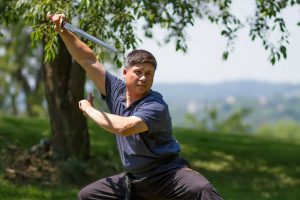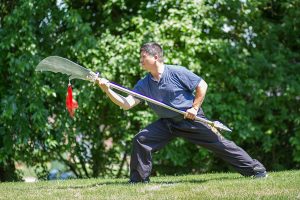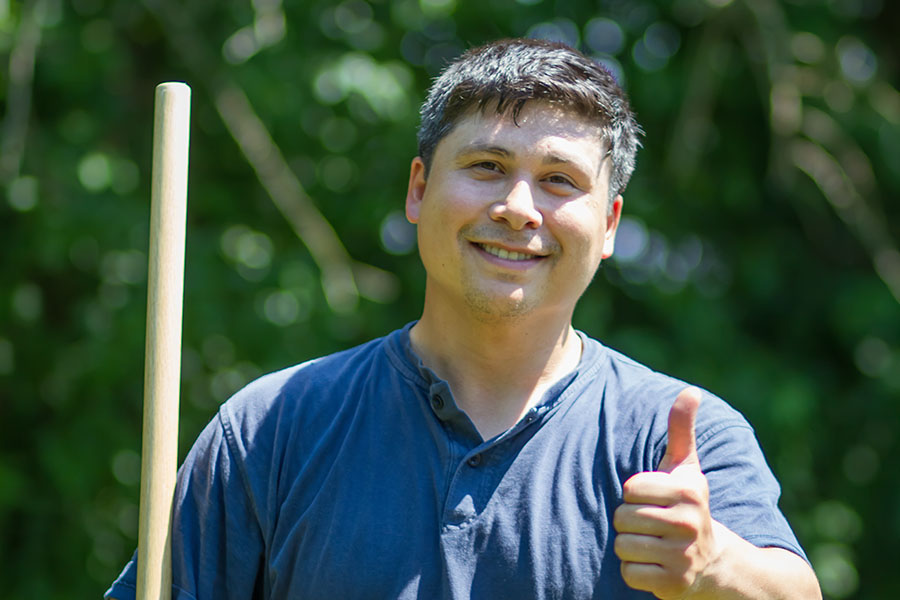Onassis Parungao can lay claim to being the first Filipino fighter in the UFC. He fought for the promotion in 1995, well before the sport of MMA had entered the consciousness of the mainstream.
Parungao competed on the non-televised portion of UFC 7: ‘Brawl in Buffalo’ which was the promotion’s first event to be held in the state of New York. It featured an eight-man tournament and a ‘super fight’ between Ken Shamrock and Oleg Taktarov.
Parungao revealed that he was personally handpicked by UFC co-founder Art Davie from among hundreds of candidates because of his martial arts background and nationality,
“They never had a Filipino on any of their cards at that time, so he thought it was a great idea to have me represent the Philippines. I submitted my entry into UFC 7 as a Filipino kung fu fighter. It was a done deal after that,” he said.
Just in case anyone was in doubt as to which country Parungao was representing he wore a t-shirt with ‘Philippines’ stencilled on the back,
“This day a lot of guys don’t even wear shirts in a fight. You would notice I purposely wore a shirt on that night. I grew up Filipino, from the family to the culture and food. I was born in Spain and I grew up in America but I am Filipino,” he said.

Great experience
Parungao started training martial arts at an early age under the tutelage of his father who served in the U.S. military. He was looking for a way to test his skills and found out about the UFC,
“I got in a lot of street fights being a Navy kid. I want to get out and I want to do it and then I realize hey maybe I can try that. To tell you the truth, I knew that there wasn’t a Filipino guy there. So I was banking on the day they would let me in there. All the stars aligned,” he said.
As an alternate match for the tournament Parungao took on an unknown street fighter named Francesco Maturi. The fight was set for 20 minutes, time limits having recently been introduced by the UFC.
Parungao needed less than six minutes, forcing his opponent to tap with a series of vicious ground-and-pound at the 5:26 mark,
“Overall, it was a great experience for me. It felt so awesome, especially when you hear a guy like Michael Buffer announce a Filipino name like mine. I was so young and naïve back then,” he stated.

Walking away
Two months after his stint in the UFC, Parungao flew to Moscow, Russia and participated in Absolute Fighting Championship’s one-night tournament, where he scored a submission win in the opening round of the competition before bowing out in the semi-finals.
Parungao subsequently received a lucrative offer from Pancrase but the timing was not right,
“I just got married, and then there was this guy named Takeya Oitate. He was offering me a contract, money, and a fight. Personally, I wanted to do it. But I chose my family over that offer,” he said.
He walked away from MMA to pin his entire focus on family life but continued teaching martial arts at Cheng Yee Kung Fu School in Ledyard, Connecticut. Parungao has continued to follow the sport and watches the recent generation of Filipino fighters,
“I like Eduard (Folayang) so much and Gina (Iniong) who is a wushu champion. Another guy that I like is Rolando Dy. Respect to all those guys. I know what it’s like to get in the ring. Because those individuals have gotten into the ring, they got my respect,” he said.
Parungao could never have anticipated how popular MMA would become and does harbour regrets about his decision to walk away from the sport so early,
“Yes, I have some. I do. I’m 50 now, but I still feel really strong you know. I mean, put me in a match against another 50 year old and that would be fair,” he said.

Wild west
Parungao says he has never stopped training but became more focused on personal development than actual competition,
“I was a fighter first, and then my sifu for Chinese martial arts turned me into a martial artist. It just turned me into someone that didn’t need to prove it as much. But I do have some regrets like I feel like I could. I’ve never stopped training. I still go to a gym and spar with guys. Just like MMA has evolved and improved, so have I.”
He competed during a completely different era. There was no drug testing, commissions or sanctioning bodies and Parungao looks back at this period fondly,
“It truly was the wild west. Back then it was more interesting because you would see taekwondo versus a guy from another martial arts. Nowadays, everybody’s got Brazilian Jiu-Jitsu, everybody’s got Muay Thai and boxing. It’s more professionalized and there are weight class, there are gloves, you can’t do certain things,” he said.
While Parungao acknowledges that these developments have helped the sport grow he feels that a little something has been lost in the process,
“I’m not saying it’s not great but it’s not like the wild west anymore. It was crazy back then.”



















